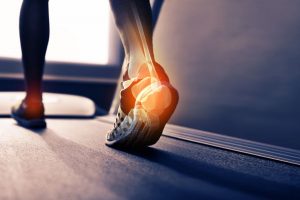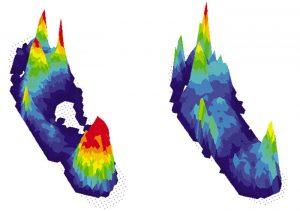Causes of High Arches Foot
The causes of the pathogenesis are complex, most of which are neuromuscular diseases. The dynamic factors that cause the arch of the foot to be weakened, such as weakening of the tibialis anterior muscle or calf triceps muscle, and the internal muscle contracture of the plantar side, causes the longitudinal arch of the foot to increase. The reasons for the formation of high arch feet can be divided into the following four points:
1. Genetic factors
Numerous medical research reports indicate that for children with high arch feet, their parents or siblings may also have high arch feet.
2. Nervous system disease
Spina bifida, hereditary motor, sensory neuropathy, cerebral palsy, Fleet-Leish disease (hereditary motor disorder), polio, spinal muscular atrophy, spinal cord syndrome, etc. all have weak foot muscles, Imbalance, atrophy, and stiff and deformed foot bones.
3. Deformed / Stiff High Arch Feet
Stiff, high arched feet are caused by trauma to foot pressure changes, dysfunction of the posterior tibial tendon, inhibition of the normal development of foot bones, and imbalance of the development of foot muscles.
4. Improper footwear
Wearing shoes that are too small, too tight, and too narrow for a long time will prevent the bones of the foot from stretching properly, resulting in improper external rotation of the heel during walking, which will affect the correct development of the bones of the foot.

Classification and Characteristics of High Arch Foot
According to the height of the arch, whether it is accompanied by other deformities of the foot, the high arch feet are usually divided into four types and corresponding characteristics:
1. Simple high arch feet
The main reason is that the forefoot has a fixed plantar flexion deformity, and the first and fifth metatarsals are evenly weight-bearing. The medial and lateral longitudinal arches of the foot are uniformly increased, the heel remains in a neutral position, or there is a slight valgus.
2. Inversion type high arch foot
Only the metatarsal flexion deformity of the medial column of the forefoot, the first and second metatarsals, increases the internal longitudinal arch of the foot, while the external longitudinal arch is still normal. The fifth metatarsal can easily be elevated to a neutral position when it is not weight-bearing, while the first metatarsal can not be passively extended to the neutral position due to fixed metatarsal flexion, and has an internal rotation deformity of 20 to 30°. The initial hindfoot shape is usually normal. When standing and walking, the pressure on the first metatarsal head increases significantly. To reduce the pressure on the first metatarsal head, the patient often adopts the foot varus posture to bear weight, and the fixed varus deformity of the hindfoot appears in the late stage. Most patients have claw-shaped toes, the first metatarsal head protrudes toward the sole of the plantar, the soft tissue of the plantar weight-bearing area thickens, and the corpus callosum is formed and painful.
3. Follow the high arch foot
It is common in polio and meningeal myelopathy. It is mainly caused by triceps paralysis of the calf, which is characterized by the calcaneus in a dorsal state, and the forefoot is fixed in the plantar flexion position.
4. Plantarflexed high arch feet
Mostly secondary to the surgical treatment of congenital clubfoot. In addition to the fixed plantar flexion of the forefoot, this type also has obvious plantar flexion of the hindfoot and ankle joints.
The clinical manifestations of various types of high arch feet are not consistent, but the forefoot has fixed plantarflexion deformities. The toes are usually normal in the early stage. With the development of the disease, the toes retreat gradually, the interphalangeal joints are plantar flexion, the metatarsophalangeal joints are excessively extended, and the toes are deformed. In severe cases, the toes cannot touch the ground.
Among the four types of high arch feet, the heel line and plantar flexion type high arch feet are relatively stiff, and the arch elasticity is severely reduced, often developing into rigid high arch feet.

Clinical Examinations and Evaluation
Physical examination showed that the longitudinal arch of the medial foot was higher, the length of the foot arch was shortened, the plantar metatarsal head was prominent, the corpus callosum appeared, and there was tenderness. X-ray examination can take a lateral view of the foot in a standing position. Under normal circumstances, the longitudinal axis of the talus and the first metatarsal are on the same line, and when the foot is high, the two are at an angle.
Foot abnormalities and deformities will show abnormal plantar pressure, abnormal changes in the shape of the arch, and abnormal rolling between the sole and the ground. Therefore, the plantar pressure, gait, lower limb joint motion range, and pain points must be checked during clinical examination and evaluation.
Clinically, the static and dynamic plantar pressure equipment can be used to check the plantar pressure status at the static and dynamic time, the three-dimensional gait analysis equipment can be used to check the motion status of each joint of the foot and lower limbs, and the three-dimensional foot scanner can obtain the three-dimensional shape of the plantar. Combined with manual inspection of foot and lower limbs trunk motion range, bone structure, and soft tissue medical means inspection, comprehensive inspection and evaluation are carried out.
With age, the stiff deformity of the high arch foot tends to increase. Preventing the structural rigidity of the foot bone and the decrease of the elasticity of the tendon and soft tissue should be the primary treatment goal.
In the production of insoles and orthopedic shoes, based on determining the three-dimensional shape of the arch of the foot and the abnormal point of plantar pressure, prevent the further development of foot deformity, reduce pain, improve the elastic cushioning function of the foot and walking ability, etc., through physical therapy, etc. A variety of rehabilitation training methods to improve the patient’s original foot movement function, lower limb joint mobility, improve lower limb muscle movement function and movement coordination ability are the key to the comprehensive rehabilitation of high arch feet.
The next essay will be a focus on the high arch insoles treatment.

https://aideastep.com/high-arch-foot-overview-characteristics/
